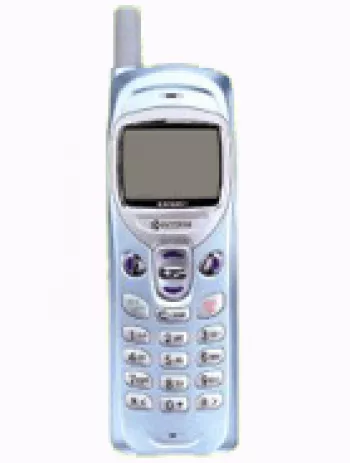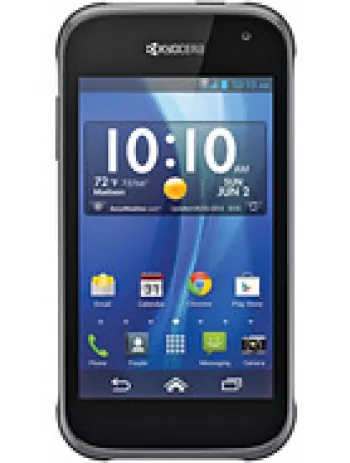
Introduction to Kyocera Hydro Elite
The Kyocera Hydro Elite is one of the early rugged smartphones that was released in the third quarter of 2013. Known for its water resistance and durable design, the device was targeted at users needing a robust phone, capable of handling rough conditions while still offering the functionalities expected from modern smartphones at the time. Although it has been discontinued, the Kyocera Hydro Elite remains an interesting device to review for its unique features and specifications.
Design and Build
The Kyocera Hydro Elite features a compact and ergonomic design. With dimensions of 122.4 x 60.4 x 10.8 mm and a weight of 128 grams, it fits comfortably in the hand and is easy to carry. The device was designed with durability in mind, offering water resistance capabilities that were ahead of its time. The robust design ensured that the phone could survive accidental drops and exposure to water, making it ideal for users who have an active lifestyle or work in demanding environments.
Display
This smartphone boasts a 4.3-inch IPS LCD display with a resolution of 720 x 1280 pixels, offering a pixel density of about 342 ppi. This resolution provides a sharp and vivid viewing experience with good color accuracy and clarity. The screen size is practical for one-handed use while still being large enough for browsing the web, watching videos, and other multimedia activities. Although the display is not the largest by today's standards, it was quite competitive in the mid-range category upon its release.
Performance and Platform
The Kyocera Hydro Elite is powered by a Qualcomm MSM8960 Snapdragon S4 Plus chipset, featuring a dual-core 1.5 GHz Krait CPU and an Adreno 225 GPU. With 1.5 GB of RAM, the device offered relatively smooth multitasking and performance for its time. It was adequate for handling common applications and tasks without significant lag. The device initially operated on Android 4.1.2 (Jelly Bean), providing users with a straightforward and user-friendly interface. While it lacks the advancements of newer versions of Android, Jelly Bean was a solid, reliable operating system with robust app support in its era.
Camera
The Kyocera Hydro Elite comes equipped with an 8 MP rear camera featuring autofocus and LED flash. Additional features include HDR and panorama modes, enhancing the quality of photography in various settings. The camera is capable of recording videos at 1080p@30fps, which was an attractive feature for a device released during that period. Additionally, there is a 1.3 MP front-facing camera designed for video calls and basic selfie capabilities, although it is not equipped to compete with modern front-facing cameras.
Storage
The device includes 16 GB of internal storage, with the option to expand via a microSDHC card. This expansion capability was particularly useful for users who required additional storage for media such as music, videos, and photos. The inclusion of expandable storage was an essential feature for many users, offering a degree of flexibility not always found in competing devices at the time.
Battery Life
One of the highlights of the Kyocera Hydro Elite is its Li-Ion 2100 mAh removable battery, which provides a standby time of up to 236 hours and up to 13 hours of talk time. While not groundbreaking, the battery life was sufficient for moderate daily use. The removable battery design was advantageous for users who preferred to carry extra batteries for extended periods away from power sources, adding an element of practicality for on-the-go power management.
Connectivity
For connectivity, the device supports multiple network technologies, including GSM, CDMA, EVDO, and LTE, allowing it to operate on a wide range of network frequencies. It supports LTE Cat3 with speeds up to 100/50 Mbps, offering decent internet connectivity for its time. Other connectivity features include Wi-Fi 802.11 a/b/g/n with dual-band and Wi-Fi Direct support, Bluetooth 4.0, GPS, and NFC. Although it lacks a radio, the device provides microUSB 2.0 with MHL TV-out, enabling users to connect and share content with other screens or devices easily.
Sensors and Additional Features
The Kyocera Hydro Elite includes several sensors such as an accelerometer, proximity sensor, and compass, contributing to its utility and ease of use. These sensors support various applications, from navigation to motion-sensitive gaming experiences. Although it lacks some advanced features found in more modern devices, such as fingerprint sensors, it offered functional technology that complimented its rugged nature.
Conclusion
The Kyocera Hydro Elite stands as a notable example of a rugged smartphone designed to withstand demanding environments while still providing essential smartphone functionalities. Its durable build, water resistance, and practical features made it appealing to a niche audience. Although the technology may now seem outdated compared to modern advancements, it serves as a reminder of the evolution of smartphones and the shift toward devices tailored to specific user needs. Despite being discontinued, the Hydro Elite remains a relevant study in design philosophy, user-focused features, and the advancement of rugged smartphone technology.
Key Features of Kyocera Hydro Elite
- Waterproof Design
- 4.3-inch IPS LCD Display with 720 x 1280 pixels resolution (~342 ppi density)
- 4G LTE Connectivity for faster internet access
- Powered by Qualcomm Snapdragon S4 Plus with Dual-core 1.5 GHz CPU
- 16GB of Internal Storage with 1.5GB RAM and expandable via microSDHC card slot
- 8 MP Rear Camera with LED flash, HDR, and panorama features
- 1080p video recording at 30fps
- 1.3 MP Front Camera
- Android 4.1.2 (Jelly Bean) Operating System
- Wi-Fi 802.11 a/b/g/n with dual-band, Wi-Fi Direct, and DLNA support
- NFC for easy file sharing and connectivity
- Removable Li-Ion 2100 mAh battery with up to 13 hours talk time
- Bluetooth 4.0 with A2DP, EDR, LE support
- microUSB 2.0 with MHL TV-out capability
- Lightweight at 128 g (4.52 oz)
Kyocera Hydro Elite Key Disadvantages
- Discontinued status means no official support or updates.
- Runs on an outdated Android 4.1.2 (Jelly Bean) operating system.
- Low internal RAM of 1.5GB may result in slower multitasking performance.
- Limited internal storage of 16GB without mention of higher capacity options.
- Underwhelming camera performance with an 8 MP main camera and 1.3 MP selfie camera.
- Lacks a radio feature.
- Battery capacity of 2100 mAh might not be sufficient for heavy usage.
- Only one color option (Black) available.

View Also
More Phones
All Rights Reserved +13904 Phones © Mobilawy 2025

























